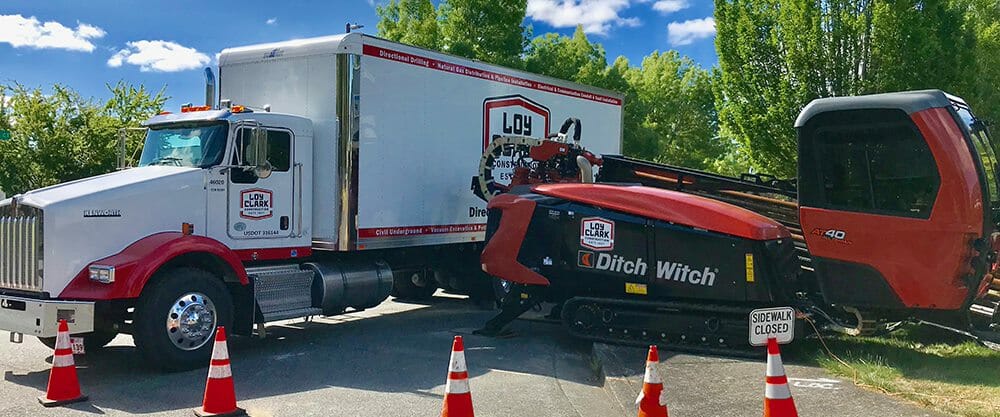Fads and Methods: The Horizontal Drilling Transformation

The practice of directional drilling has emerged as a transformative technique in the world of underground exploration and utility installation. Unlike conventional vertical drilling, directional drilling allows drillers to drill at multiple angles to reach targets that are otherwise hard or impossible to access. This innovative approach not only improves efficiency but also minimizes the impact on the surface environment, rendering it a favored option for multiple fields. As urbanization continues to expand, the need for advanced drilling techniques has never been so important, driving the advancement of this essential technology.
In this article, we will examine the trends and techniques shaping the directional drilling revolution. From grasping the principles of directional drilling to delving into its specific applications in the petroleum sector, utilities, and clean energy, we will provide a comprehensive overview. We will also emphasize the benefits of this method compared to traditional drilling, examine the technology behind it, and discuss the future innovations that have the potential to advance its capabilities. Join https://otto-thyssen.federatedjournals.com/drilling-with-purpose-improvements-for-directional-boring as we navigate the intricacies of directional drilling and uncover why it has emerged as a key component of modern infrastructure development.
Comprehending Directional Drilling
Directional drilling is a cutting-edge technique that allows the drilling of holes at multiple angles rather than exclusively perpendicular. This method permits drillers to access goals that are not exactly under the boring rig, making it a adaptable solution for accessing underground resources more effectively. Directional drilling is crucial in industries such as oil and gas, utilities, and clean energy, where accurate drilling paths can reduce expenses and ecological footprint.
This method has evolved substantially since its introduction, incorporating advanced tools and strategies that boost boring accuracy and effectiveness. With the ability to bore sideways, users can maneuver around hindrances, reduce the number of ground sites needed, and lessen disruption to the environment. Comprehending Source of directional drilling systems provides insight into how this approach has changed resource harvesting and infrastructure development.
Moreover, directional boring is distinguished by its diverse uses, ranging from improving energy retrieval to facilitating public services and sustainable energy projects. Each application utilizes customized methods designed to the particular requirements of the environment and the intended results. As the field continues to evolve, the methods and technologies used in directional drilling are ready to additionally transform how we carry out subsurface exploration and building.
Advantages of Directional Drilling
Directional boring offers significant advantages over conventional vertical drilling techniques, particularly in terms of effectiveness and cost-effectiveness. By allowing for inclined boreholes, horizontal drilling reduces the distance to the target site, which can lead to shortened drilling times and lower costs. This effectiveness is particularly crucial in sectors such as petroleum, where rapid access to materials can have a significant effect on financial success.
Another key advantage is the reduction of ground disruption. Unlike traditional drilling, which often requires extensive clearing of land, horizontal drilling can maneuver around obstacles and avoid protected areas. This is especially valuable in urban settings or environmentally sensitive locations where protecting the landscape and reducing disturbance is essential. As a result, less resources are needed for land restoration, and the overall environmental impact is significantly lessened.

Moreover, horizontal drilling enhances project versatility by allowing access to previously unreachable areas. This technique facilitates for the placement of services and infrastructure in different landscapes, avoiding the challenges posed by natural barriers. With its ability to adjust to diverse environments and issues, horizontal drilling plays a vital role in contemporary construct development, establishing it an essential technique in the sector.
Future Advancements in Directional Drilling
The prospects of directional drilling is set to be defined by revolutionary innovations that improve productivity and accuracy. Advanced technologies, such as AI, are being integrated into drilling systems to improve precision during drill planning and execution. These systems equip operators to process vast amounts of data for real-time adjustments, considerably minimizing downtime and boosting overall productivity.
Robotics will also play a crucial role in the development of directional drilling. The development of automated drilling rigs and intelligent sensors can optimize operations and lessen the need for manual oversight. This move towards automation not only boosts safety by reducing the likelihood of human error but also enables more intricate drilling projects to be executed with assurance, especially in demanding environments.
In addition, as the world increasingly focuses on sustainability, directional drilling is set to support the transition to eco-friendly infrastructure. https://yamcode.com/ in drilling fluids aim to reduce environmental impact while upholding efficiency. With a commitment on minimizing surface disruption, directional drilling will continue to be a key player in urban development, utility installation, and renewable energy applications, matching global efforts to create more resilient and durable communities.
